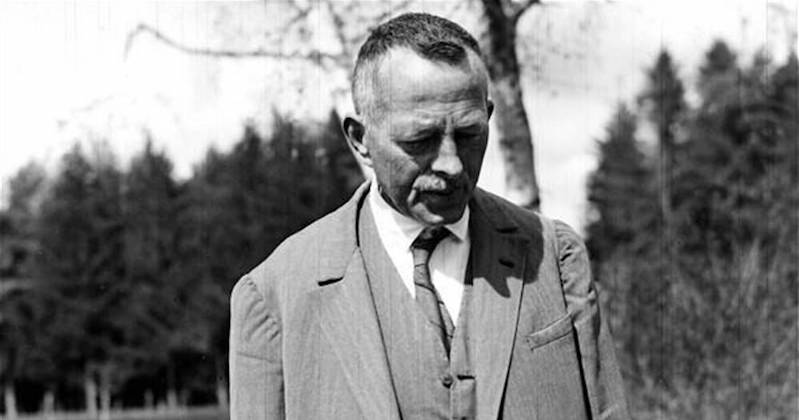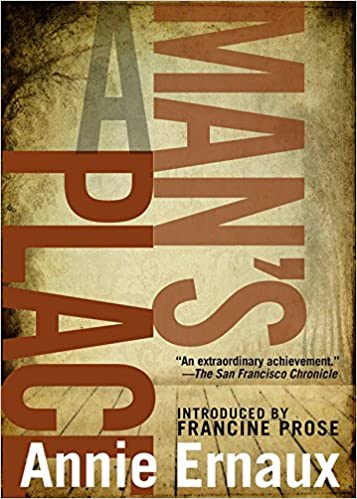 A Man’s Place
A Man’s Place
Annie Ernaux (Tanya Leslie, trans.)
Seven Stories Press
A memoir, biography, and homage to her father, Ernaux explores her upbringing in rural France by a man—the main motivating force of the family—who rose from poverty to the American equivalent of lower-middle class stability.
Without romanticizing any of his past, Ernaux describes her father’s birth into the French equivalent of sharecroppers: Workers of other peoples’ land for poverty wages and little respect. Her father, she points out, was pulled out of school just days short of obtaining his elementary school certification. The family’s reason was based on necessity: Now that he was 12, the landowners would not allow him to sleep in the house or feed him without pay. Ernaux’s grandfather could not afford his son’s room and board, and so it was off to the barn loft with him, with nothing but hard life ahead.
Ernaux implies that she was on the outs with her father during her teen years, as she grew closer to her mother and he grew impatient with her teenage behavior. Typical of Ernaux’s essays is an attempt to look as issues with eyes as cold as possible—a French Didion, though of a different temperament and outlook. As a result, Ernaux focuses on her father’s actions and their outcomes rather than the emotions they evoke; she recalls the phrases her father and mother emphasized time and again, drawing attention to how much she has internalized them in her own way of thinking and writing, even if just ironically; his commitment to modesty even when, well into middle age, he becomes the first person in his family to own property—a small shop and house that he and her mother ran for many years.
Despite his gruff exterior, he made sure his daughter got as much education as she qualified for, and never at his or his wife’s insistence. Ernaux went to college to become a teacher, and two months after she passed her qualification exam, her father died.
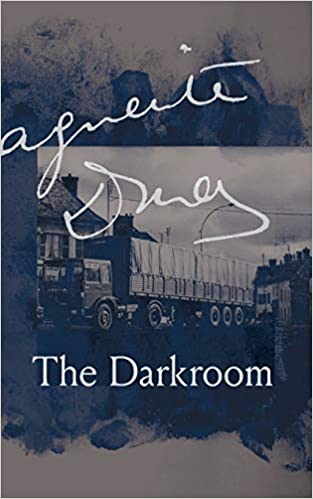 The Darkroom
The Darkroom
Marguerite Duras (Alta Ifland and Eireene Nealand, trans.)
Contra Mundum Press
The Darkroom is the script to Duras’s 1977 film Le camion (The Truck), plus “explanatory texts,” an interview with Duras, and translators’ notes. (Note: Le camion is available on Youtube, but after reading this book the English subtitles can be jarring both in their differences from this translation and Duras’s stated intentions about what she was trying to achieve.)
In 120 pages of text and 120 minutes of film, Duras creates a story that on reflection would make for a very weird episode of “The Twilight Zone,” even by its standards: A “woman of a certain” age hitches a ride from a truck driver, who pays her little to no attention during the trip, while she tells him the story of her life. When she reaches the present day in her tale, she says that her daughter gave birth today. The woman’s car has broken down, and hence the hitch hiking. After announcing this, she asks the driver to stop and let her off where there are: on a two-lane highway in the middle of nowhere. He obliges, end of story.
Except: She apparently does this every night: hitches a ride from a stranger and tells him the story of her life, to which he pays no attention. Think of it as an inverted version of the legend of Phantom 309.
And none of it appears odd while it is happening. That’s the script.
As a film, Duras adds the following touches (quoted from the translators’ notes, which nicely sum up everything):
“Neither of the characters are ever shown. Instead. . . the juxtaposed voice-over text and cutaways prompt the film’s audience members to their own images of the trucker and hitch hiker onto the screen. Between the images of the truck, juxtaposed voice-overs, and the cutaways to Duras and [Gèrard] Depardieu [reading the script], the art of film becomes the art of coordinating multiple faculties—not only the visual and aural, but also those of memory, imagination, and desire.”
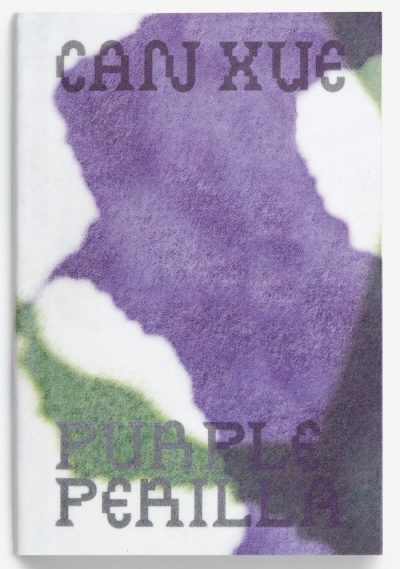 Purple Perilla
Purple Perilla
Can Xue (Karen Gernant and Chen Ziping, trans.)
isolarii
Purple Perilla is made up of three stories that blend realism with enough fantasy to lend the narratives a feel of the uncanny, as the characters transform themselves with newfound knowledge about themselves and their relationship with nature. “An Affair” deals with a single, 36-year-old woman slowly seduced (and seeking seduction) by a fellow bus traveler who drops hints on how to find him. “Mountain Ants” and “Purple Perilla” also feature characters who are at a turning point in their lives, open to new experiences, and showing uncharacteristic bravery in setting out on new paths that quickly become obsessions to follow. People are prone to falling asleep in Can’s stories—usually a sign that their lives are about to become fascinating and rich. The introduction, by Scholastique Mukasonga, is available only online: https://www.isolarii.com/media/pages/home/1291681238-1608228572/foreword_scholastique_mukasonga.pdf
https://youtu.be/3st_hP9KDts
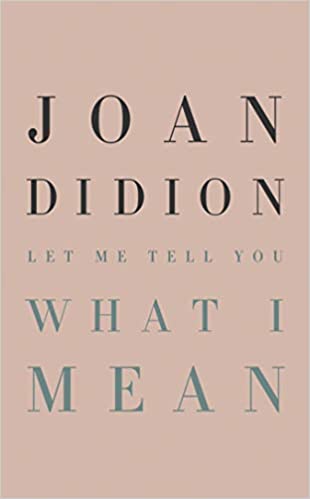 Let Me Tell You What I Mean
Let Me Tell You What I Mean
Joan Didion
Knopf
Previously unpublished essays by Didion from 1968 to 2000, tracking her changes in rhetorical choices—precision here, implication there—as the narrative “I” changes from implying a specific person of a certain breeding to a generalized person of a certain sensibility: the former talking just a bit louder than the latter, the latter tempered by a cold, analytic eye, long wakened to the deceits of romanticism and ironies of history, expressed in tight, clipped prose.
Topics include college expectations vs. reality, gung-ho WWII vets and the deaths of their own sons in Vietnam, why she doesn’t write short stories, a photo shoot with Robert Mapplethorpe, and so forth. Memories of film directors and actors, sets, collaborators. The final essay on Martha Stewart is almost worth the price of admission. Hilton Als writes a sympathetic and astute assessment of Didion in the book’s introduction.
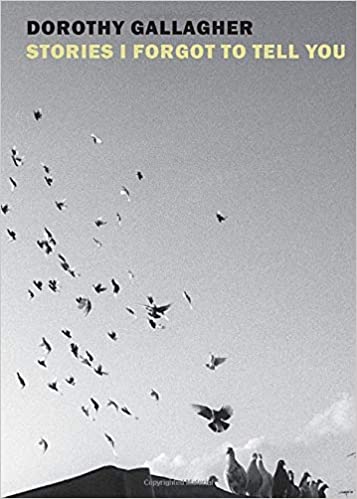 Stories I Forgot to Tell You
Stories I Forgot to Tell You
By Dorothy Gallagher
NYRB
Even after several years had passed since Dorothy Gallagher’s husband died, she found herself still talking to him about what was happening in her life, sharing her random musings, recalling shared incidents with him and how she feels about them now, looking back. But rather than continue to merely talk to herself, Gallagher decided to write down her thoughts to husband. The essays collected here are less a memoir of her life with her husband but of her present life, as influenced by her marriage, and the responses she imagines her husband making were he still alive.
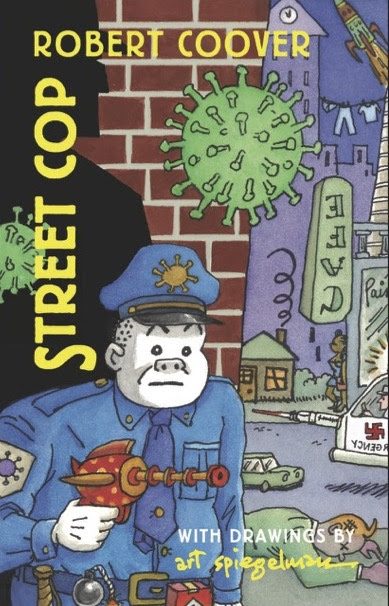 Street Cop
Street Cop
Robert Coover (story), Art Spiegelman (drawings)
isolarii
A little gem by two masters of fiction (Coover) and drawing (Spiegelman) covering the shift of a cop on his beat. The time is past present and future, but when it comes to crime, motivations and social positions result in similar fashion, and thus it makes sense that Spiegelman uses Sluggo as his archetype—rough’n’tough with a heart of gold, a heart now placed in a middle-aged body that has expanded by 2 pounds each year since adulthood. (Nancy appears even worse for wear.) It’s a noir tale that plays with genre conventions—and yes, there’s even a kiss from a femme fatale (he said misleadingly) the street cop will never forget.
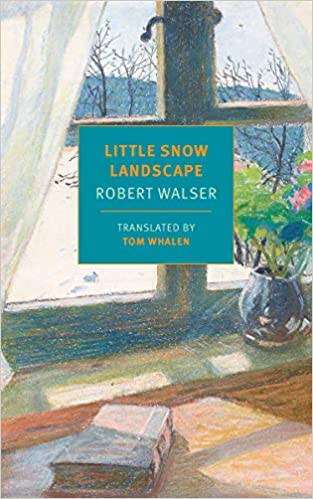 Little Snow Landscape
Little Snow Landscape
Robert Walser (Tom Whalen, translator)
NYRB Classics
“The desire and passion for sketching life with words stems finally only from a certain precision and beautiful pedantry of the soul that suffers when it has to witness so many lovely, vibrant, urgent, transitory things flying off into the world without having been able to capture them in a notebook. What endless worries!”
As with Bolaño—but for more years now—Robert Walser is a writer with a higher rate of post-mortem publishing than during his lifetime. In Walser’s case, it’s not just a matter of making available in English his previously published works, it’s also of publishing newly discovered manuscripts and manuscripts that could not be read until the “code” Walser employed could be cracked. (He wrote not so much in code but in an old German idiom at “microscript” scale. Just how micro was this script? Walser managed to write an entire novel on a single sheet of paper that was (as I recall) similar in size to a sheet of legal paper. There are 570+ plus of these sheets now in the Walser Archive. Only a few decades ago were these sheets decoded, after the markings were first thought to be some sort of nonsense Walser engaged in with pencils while institutionalized. “I came here to be mad,” he allegedly said, “not write,” which apparently was far from true.)
And so it seems that while at least 3,700 pages of published Walser exist (in the 1985 version of the complete works), the translation tap is set to about 150-180 pages a year in English.
And the pages continue to impress, especially in the capable hands of a good translator, as we have here with Tom Whalen, who—like Susan Bernofsky and Christopher Middleton—are aces at replicating the nuances in Walser’s prose, which emotionally often has the feel of forced cheerfulness, of someone battling between optimism and resignation, elation and offense.
The stories gathered in Little Snow Landscape, arranged chronologically, follow Walser from 1905 to 1933, four years into the institutional living in which he would remain until his death in 1956. Let a couple of lines stand in for some of Walser’s tics, one of them being to comment on the quality of his writing while he’s writing: “The sky had the deep, blushing-with-joy blue of a little frock fluttering around pretty legs, which without doubt constitutes a rather serious contemplation of nature” (from “Fragment”).
In “Wenzel,” Walser describes a person of a (self-defeating) mercurial temperament, another Walserian tic. In this case, Wenzel is someone whose sudden ardor for acting is challenged when he receives his first role. “Wenzel is to play a prince’s lackey who, among other things, has to take a slap in the face. No, that he cannot play, that’s too deplorable. . . He absents himself from the performance, it’s too stupid.” But finally, Wenzel tells himself, “‘Love and ardor endure everything, even a slap in the face.’” And that’s pretty much how Walser lived his life.
COMING SOON: Clairvoyant of the Small: The Life of Robert Walser By Susan Bernofsky
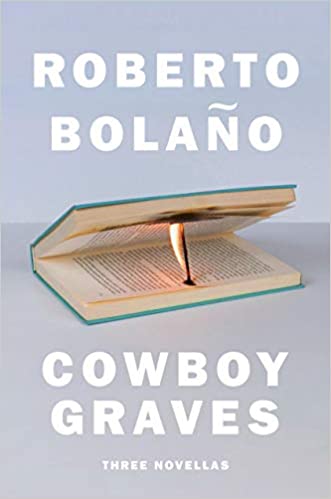 Cowboy Graves
Cowboy Graves
By Roberto Bolaño
Penguin Press
Every time Roberto Bolaño’s estate produces a new batch of writings recovered from his disc drives, I fear that the law of diminishing returns will kick in and that henceforth all new books published under his name should be labeled “For irrational fans only.”
Fortunately, that time has yet to come. But. Of the three novellas printed here, the first, “Cowboy Graves” is the strongest. “French Comedy of Horrors” and “Fatherland” have their strengths and the usual themes and characters: a pair of beautiful, literary sisters; Pinochet’s right-wing, quasi-Nazi war against the citizens of Chile; championing poets little known in their own countries, and so forth. But many of the short pieces that comprise each novella read less like deleted scenes from published works than trial pieces, working out ideas.
Although Bolaño’s writing is typically discursive, the stories here—such as the “French Comedy”—feel too talkie, too much like Bolaño spinning webs to catch ideas. He improvises well, but despite the discursive nature of his narratives, they rarely feel flaccid, in need of further editing. Cowboy Graves isn’t for irrational fans only, but novices to Bolaño will have difficulty finding in it the narrative impulse that made the thousand pages of 2666 pass by too quickly.


